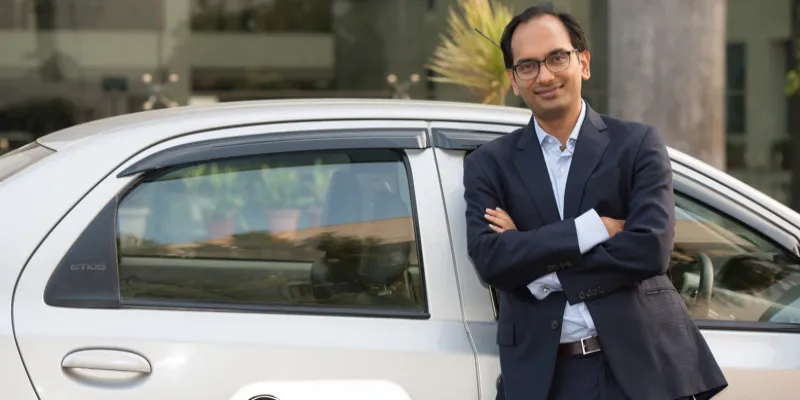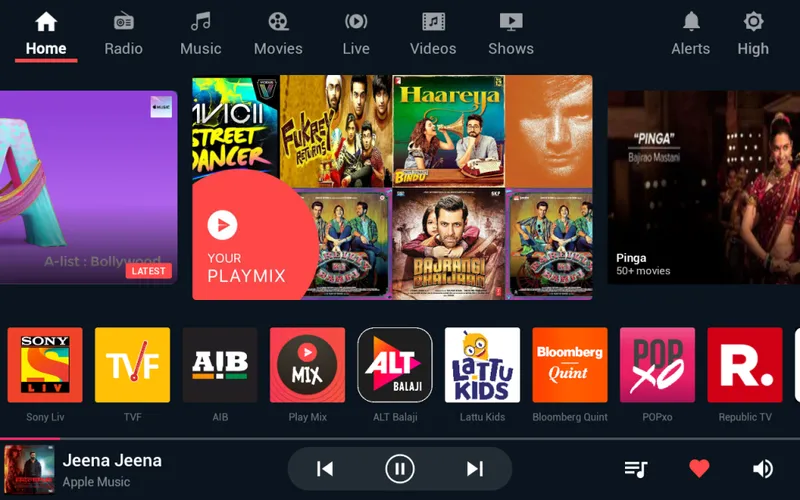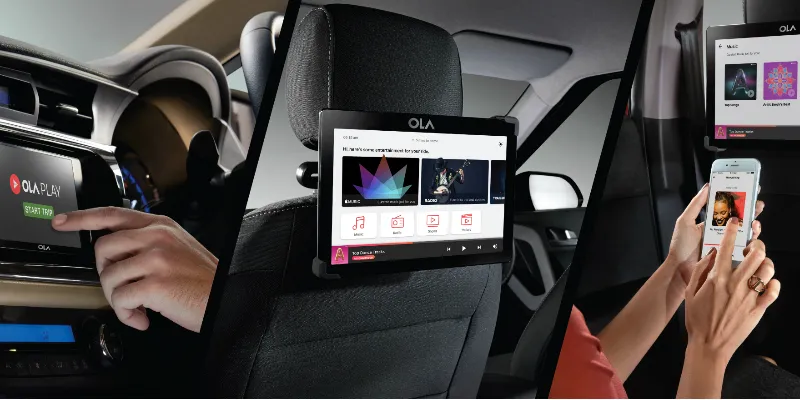It has been two years that Ola launched its connected car platform, Play. Having made a mark as an in-car customer engagement and entertainment system, what is its tech team thinking next?
Any city dweller will have a tale of woe when it comes to the daily commute. While cab aggregators eased the stress of driving to work, they created another – what to do with one’s time while in the cab.
Enter Ola, which decided to do more than just ferry people, and in November 2016 launched Ola Play to engage travel time.
Play is a personalised device, much like a tablet, connected to the car. Using it, a consumer can track the ride, listen to music, read eBooks, watch videos, and browse the internet. Also, the browsing history for each user is saved in real-time, ensuring you don’t lose your favourite playlist, or place in a movie even when you complete your ride, and can pick up from where you left off at the next.
The software is an open platform, so vendors like Apple Music, ComedyMunch, Girliyappa, FilterCopy and others can customise their offerings for the platform.
At the launch, Ola’s Co-founder and CEO Bhavish Aggarwal had said:
"Cars were initially built for drivers. But with ride-sharing, the control needs to be there for the passenger and Ola Play works along those lines.”
At the press conference two years ago, there were sceptical voices – ‘How would it be different?’ ‘Will it be able to beat Uber?’ Two years hence, the naysayers have been somewhat silenced.

More than just entertainment
Within 18 months of launching operations, the Ola Play team claims to have 50,000 cars on the platform across eight cities.
However, Play isn’t just an entertainment platform. The idea is to make it a platform that changes the way people commute. Ankit Jain, VP and Head of Ola Play, explains the platform has a captive audience, which gives the team the opportunity to enable contextual and personalised experiences.
“We see the platform give lucrative micro-targeting marketing and advertising possibilities,” says Ankit.
While Ankit remained tight-lipped about the team size, man hours spent on development of the platform or the innovations that the team is working on, he said that as of now, the company was focusing on making the platform intuitive and not on directly monetising it just yet.
Ankit says he sees Play as a launchpad from where automotive technology for smarter cars can take off and understanding driver and car behaviour is one of the key focus areas of tech at Play. He says:
“Ola and Ola Play as technology platforms gather insights and trends from rides every day. We can look at analysis of insights, which enables real-time reactions as well as improvements in services. For Play, insights and trends are used to enable personalised experiences for customers and develop productive use cases for drivers.”
The team’s efforts have already got a thumbs-up from consumers. Deepak Ravindran, Founder of Lookup, took to Twitter to talk about this:
"@OlaCabs is the most advanced cab system in the world IMO. Tried the cabs in US, Europe, Indonesia, China, nothing beat them. feels like the 1st Indian startup to be copied worldwide. Free wifi in cabs, Auto, Apple Music, Movies, what experience!”

All in the data
While it is easy to deduce Ola Play uses Artificial Intelligence (AI) and Machine Learning (ML), the system also uses GPS technology. The backend is designed such that software bugs and issues are fixed and the system is updated while the vehicle is running.
Ola claims it completes around 1.5 million rides in a day, with an average of 30 minutes per ride. To the Ola Play team, this means 45 million minutes of active data collected per day, and 1.35 billion minutes of data on a monthly basis.
"There is enough data that can be gathered. Ola Play can look at different modules of in-app purchases, tie-ups with partners, and other means of revenue generation. While it might not be an immediate source of revenue, the data gathered can be used for revenue generation," says Jaspal Singh, Partner, Valoriser Consultants.
What makes it tick?
So far so good, but the biggest question, and challenge, was internet connectivity. In answer, the team developed Auto Connect. Around end 2015, Ola had launched wifi in its Prime cars, the same time that Uber was looking to launch WiFi for its cabs in the US.
The task was easier said than done, and the experience far from seamless, for it all boiled down to connectivity.
Ankit explains Ola wanted the customer experience to be seamless – such that as soon as a customer gets into the cab, not only is she greeted, but her device also ‘automatically’ connects to the WiFi. Talking about the challenges of streaming content in a market like India, he pointed out the technological challenges:
"How do you make sure the content is reaching cars within a few hours, considering bad network connectivity? How do we ensure content is fresh and contextualised across geographies?"

To tackle this, the solution was ‘Auto-Connect’. As part of this technology, every WiFi network has a unique ID where the last five digits are the same and the phone number is the password for the network.
In Auto-Connect, the driver’s smartphone acts as an internet router through a hotspot. The 4G SIM Cards given to the drivers power the hotspots, and car systems are connected to it.
"This makes Ola Play all the more powerful. Even if the tablet gets disconnected, the customer can always fire up the Ola app and change the controls of the music and entertainment system," Ankit says.
In terms of sheer size, data exchange, and bandwidth, reportedly, Ola Auto Connect goes beyond the scale of several international telecom networks. The company has patented the technology and is now becoming its famous talking point - Ola Play with Auto Connect forming the base.
First of its kind
"For all intents and purposes, for the period of the ride, the car is ‘owned’ by the customer. Suddenly, age-old service models were becoming obsolete. To change that, 'Play’ was born," adds Ankit.
To this, Jaspal adds, "I remember Panasonic pitching the idea of an in-car entertainment system. However, they weren’t convinced of it themselves. But Ola Play brings in a different trajectory."
Ankit adds there are millions of cars, and making customised models for each one was a challenge. To overcome that, Ola Play came up with its own hardware, for which it has filed six patents.
The team was building something new and different, and the learning curve was steep, recalls Ankit. He believes it is the first global connected platform of its kind for ride-sharing.
“Play is a technology without precedent, thus challenges faced and solved are completely new and required a lot of unlearning, learning, and creative approaches. We were building a device that needed to be compatible with the car. And each car model is built differently," Ankit explains.
Needless to say, the team made several mistakes. However, lessons were quickly learnt, and changes incorporated. Play is a dynamic startup within Ola with a focused product, tech and data science, engineering, marketing, and business teams.
On the team, Ankit says that given the uniqueness of the technology, it needed to be a mix of different talent, and has a dynamic and creative set of individuals who could quickly adapt to new challenges.

Building an ecosystem
With Ola Play, the company wanted to push connectivity and content, not just a WiFi service.
While the platform currently works on the consumer side, the team is now working on the driver’s side as well to see if the platform can be used to change driving behaviour and patterns.
“Ola and Play as technology platforms gather insights and trends from rides every day. Analysis of insights enables real-time reactions, as well as improvements in service. For Play, insights and trends are used to enable personalised experiences for customers and develop productive use cases for drivers,” explains Ankit.
All-in-all, it is as Sanjay Nath, Managing Partner at Blume Ventures, once said:
"It is innovation that matters in the end. Something that is different from what others offer, either in terms of experience like how Ola is offering, or a shift in technology."







